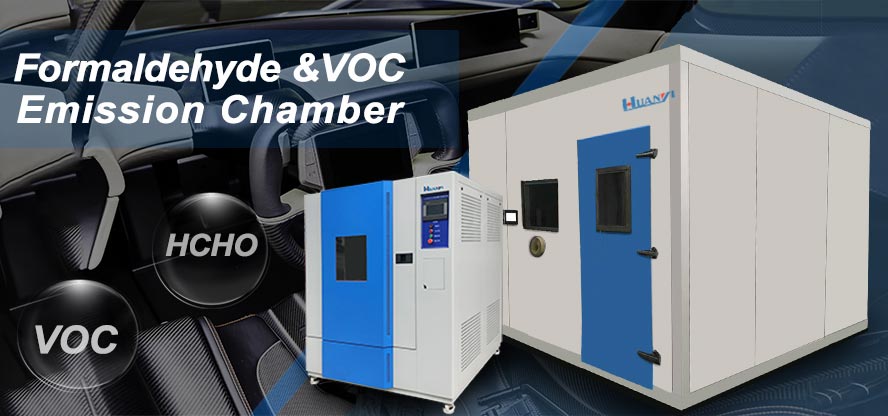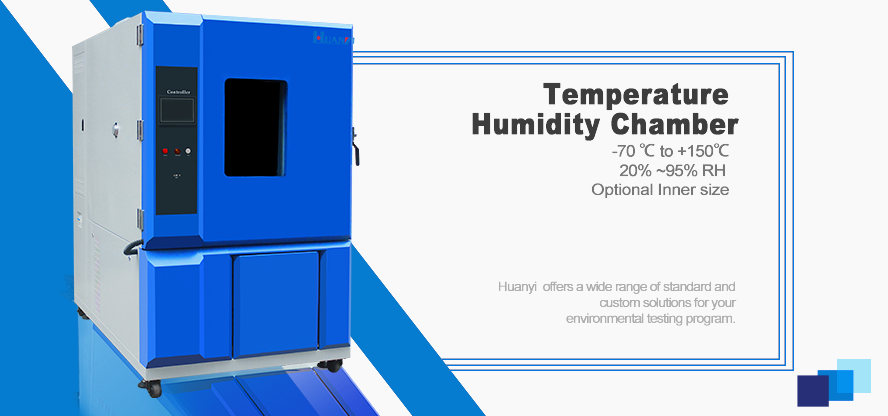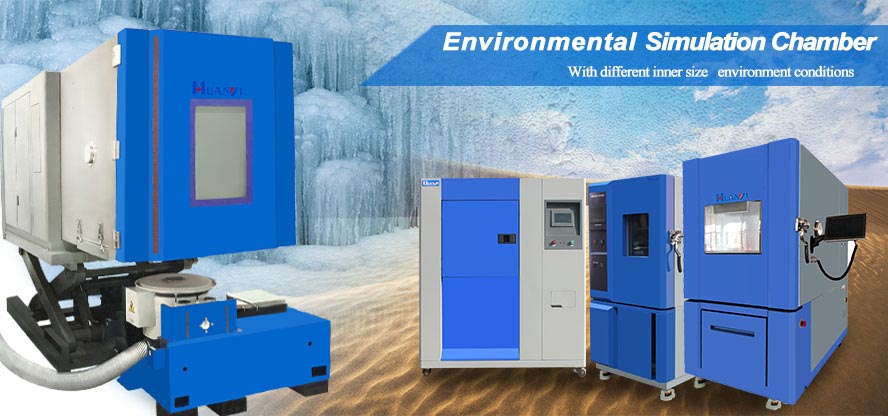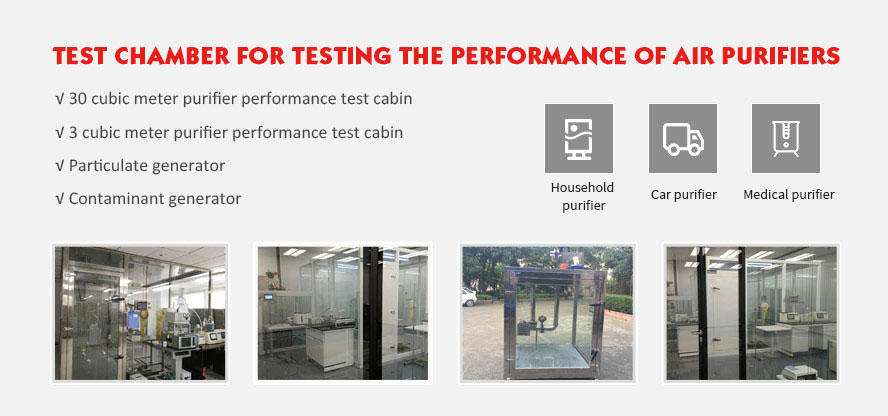New energy vehicle battery pack external fire test
The main purpose of the battery pack external fire test is to verify the battery pack's ability to withstand exposure to fire, in order to evaluate whether the on-board energy storage system can provide sufficient escape time for the driver, passengers and surrounding people when an external fire occurs. The test process simulates the heat load when fuel is burned at the bottom of an electric vehicle. This condition may be caused by fuel leakage and combustion in the electric vehicle itself (hybrid) or nearby vehicles.
The battery pack external fire tester consists of:
As shown in the figure below, the battery pack external fire testing machine mainly consists of a water pan, an oil pan, a refractory partition, a sample holder and other structural parts.
Test process data:
1. Gasoline combustion temperature distribution in battery pack external fire test.
The combustion temperature distribution of gasoline in the external fire test of the battery pack is shown in Figure 3. The current maximum temperature collected by the infrared thermal imaging camera exceeds 660°C.
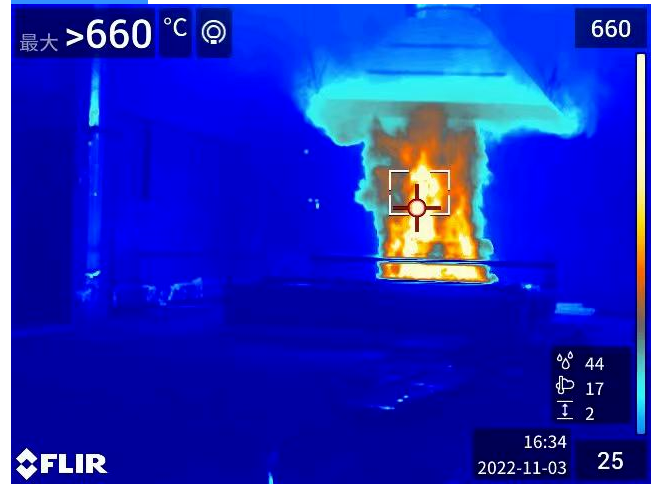
2. The height of gasoline burning flame in battery pack external fire test.
As shown in the figure above, the currently collected flame height range in the preheating stage is: ≥3.2m.
3. The amount of gasoline used in the external fire test of the battery pack.
A set of data currently collected for reference: when the oil pan size is 2.5m*1.8m, the exhaust speed of the exhaust gas treatment system is 40000m3/h, and the supplementary air speed is 35000m3/h, the gasoline consumption is 40L, and the burning time is ≥3min25s.
Detection range further extended
More and more test equipment companies are vying for a piece of the fuel cell market, which also means that competition in the market has become increasingly fierce, and many companies have begun to seek differentiated competition strategies.
Fuel cell testing equipment companies generally provide four categories of products. The most common is fuel cell engine testing systems; the second is fuel cell stack testing systems; the third is fuel cell BOP components and material testing equipment; the fourth is vehicle-mounted storage. Hydrogen system testing equipment. With the in-depth development of the domestic fuel cell industry, the supporting test equipment market segments also present three significant characteristics:
First, the detection power range of enterprises is wider than before, especially the continuous improvement towards higher power.
The high-power fuel cell engine test bench developed by Ruige New Energy covers multiple power segments such as 120kW, 150kW, 200kW, and 250kW, and serves many customers such as Shanghai Automotive Inspection, Chongqing China Automotive Research Institute, and State Power Investment Corporation; Luzhi New Energy 200kW The first-class stack test bench and engine test system have been delivered to customers for verification; Ningbo Beite's test equipment products cover three categories of power: 100W, 10kW, and 200kW; Zhongji Hydrogen has successively independently developed 100W~200kW stack test benches , 20kW~200kW system test benches and other equipment; Qunyi Energy is also expanding into stacks and system test benches above 300kW.
Second, some equipment companies dedicated to stack/system testing are actively "sinking" and developing testing equipment products for fuel cell materials and key components. For example, new testing equipment products for material verification developed by Qunyi Energy; BOP auxiliary testing products developed by Hydrogen Technology; testing products for BOP auxiliary parts such as ejector and air compressor developed by Zhongji Hydrogen, etc.
Third, vigorously develop the PEM water electrolysis hydrogen production testing equipment market. At this stage, companies that have clearly laid out the field of electrolytic water hydrogen production testing equipment include Kewell, Qunyi Energy, Ruige New Energy, Zhongji Hydrogen, Ningbo Beite, etc. Among them, Ningbo Beit stated that it plans to launch PEM water electrolysis hydrogen production test equipment products in the third quarter of this year.
Overall, with the advancement of technology and the iteration of market demand, more and more testing equipment companies can provide more detailed testing solutions, helping my country's fuel cell industry chain from core materials, components to stack systems, etc. Comprehensive detection upgrade.
Comprehensively catch up with imported brands?
The continued expansion of the market share of domestic testing equipment is of positive significance in promoting the accelerated industrialization of fuel cells in my country. However, this does not mean that domestic testing equipment has fully caught up with imported brands in terms of performance and quality. There is still room for improvement in this regard. .
"The threshold for the testing equipment industry is relatively not that high. Being able to sell products and being able to be used well by customers are two different concepts." The technical director of a domestic fuel cell system company said that the actual detection effect of domestic testing equipment There is still a certain gap compared with mature brands such as Greenlight.
Specifically, imported testing equipment has more advantages in stability, accuracy and adaptability range. And because it was applied earlier and shipped more, after many iterations, there is richer data and experience accumulation. These can only be made up for by time and continuous iterative upgrades in cooperation with customers.
In addition, domestic testing equipment for membrane electrodes, high-pressure hydrogen storage bottles, hydrogen supply valves, etc. currently still mainly relies on imports. Some core components of domestic fuel cell testing equipment such as flow meters, back pressure valves, sensors, etc. are not yet available. There are still many problems that need to be overcome to achieve localized substitution.
However, the biggest advantages of domestic testing equipment are low price, short delivery time, and fast service. With the geographical advantage of "combat" in the local market, it can cooperate with downstream customers to quickly promote product iterative upgrades.
Generally speaking, when purchasing test equipment from foreign brands such as Greenlight, the cycle from reservation to delivery generally takes more than one year. However, most domestic test equipment companies can shorten the delivery cycle to about 6-8 months, and basically Being able to respond quickly within 24 hours is also the key for domestic brands to quickly occupy the market.
With the implementation of domestic fuel cell vehicle demonstration and application urban agglomeration policies, the domestic testing equipment market is expected to further grow. In the future, the direction of industry competition will also shift from price to more emphasis on quality and focus on niche areas. After the market reshuffle, the few winning companies will gradually become on par with international first-tier brands in terms of technical indicators.

